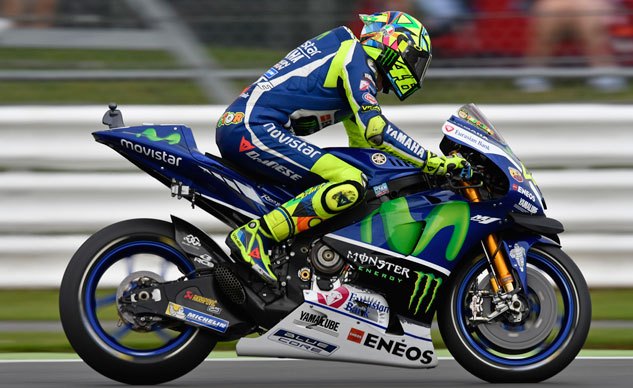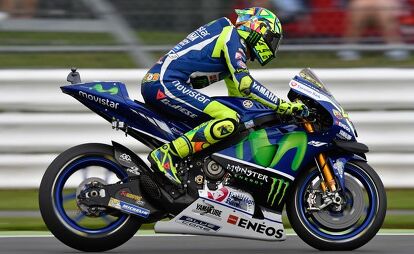Ask MO Anything: Why is Valentino's Clutch Spinning Backwards?
Dear MOby,
Watching cool super slo-mo MotoGP action the other day, I saw the dry clutch on the Yamaha M1 spinning backwards instead of the same direction as the wheels. Is that confirmation that the Yamaha also has a backward-spinning engine? Or an optical illusion or what?
Counterrevolutionary Carl
Kansas City, KS
Backward-spinning engines, i.e. the crankshaft turning in the opposite direction of the wheels, is kind of a closely guarded secret in MotoGP, and one that’s not lightly given away by the clutch’s rotational direction. As a matter of fact, a quick consultation with MV Agusta’s Research and Development Director Brian Gillen reveals that all modern sportbike clutches rotate backwards, since the clutch is always mounted on the transmission input shaft. That rotation direction is then reversed as drive passes through to the transmission’s output shaft, which of course must turn in the same direction as the the drive sprocket and rear wheel.
In a normal, forward-spinning engine, that’s easy since the input shaft is geared directly off the crankshaft. In the case of a backward-spinning engine like MV’s Triple (and Yamaha’s M1 –Ed.), there has to be some kind of jackshaft to reverse drive direction between the crankshaft and transmission.
In fact, according to Mat Oxley, maybe engine direction isn’t such a big secret anymore: Every team in MotoGP is now using a backward-spinning engine in an effort to make their bike turn quicker. According to Oxley, Honda reversed the rotation of its RC213V for ’16, Ducati did the same thing last year to solve its Desmosedici’s handling woes, so did Aprilia. And Yamaha and Suzuki have been spinning their engines backward for a long time.
In theory, that backward-spinning engine mass cancels out some of the wheels’ gyroscopic force, making the motorcycle easier to turn. It also reduces the motorcycle’s tendency to wheelie, and our man Brian Gillen says it keeps the front wheel better planted exiting corners too. The only downsides are the need for the additional jackshaft, which consumes around 1.5% of horsepower, and the need to find space for it inside the engine.
UPDATE: here’s a super slow-mo video of the clutch on Danilo Petrucci‘s Ducati exploding after colliding with Pol Espargaro‘s Yamaha. Thanks for sharing, Evans Brasfield.
Direct your motorcycle-related questions to AskMoAnything@motorcycle.com, though some say we’re better at non-motorcycle-related ones…
More by John Burns
































Comments
Join the conversation
Definitely one of the most interesting articles, bravo Ask MO.
There are a few exceptions: rocket 3, MotoGuzzi, and BMW boxer twin